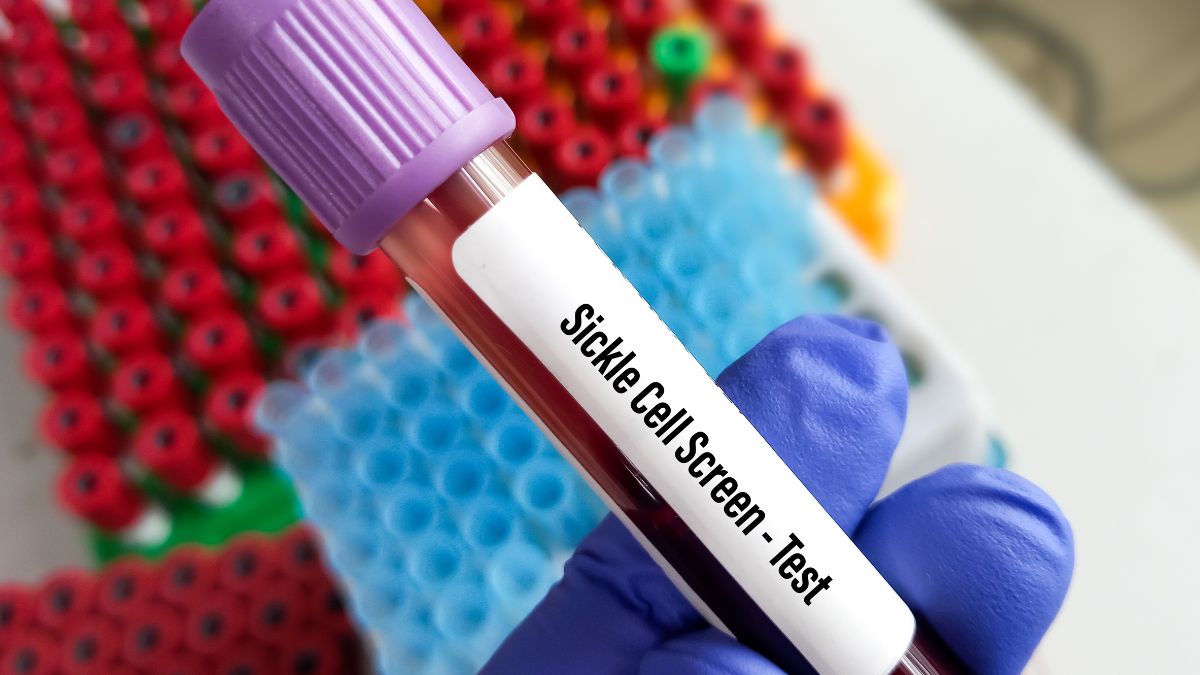- By Bornika Das
- Thu, 19 Jun 2025 07:46 PM (IST)
- Source:JND
World Sickle Cell Day 2025: World Sickle Cell Day is observed every year on June 19, serving as a crucial reminder of the urgent need to raise awareness about sickle cell disease (SCD), a genetic blood disorder that continues to impact millions globally, especially in India’s tribal and rural regions. Despite growing medical advancements, many remain unaware of the silent, life-threatening complications of this condition, one of the most devastating being the sickle cell stroke. This stroke is not just a medical emergency, but a sudden, severe and often irreversible complication that affects children and young adults living with SCD, often without prior warning.
Unlike typical strokes caused by age-related factors, a sickle cell stroke arises from the abnormal, crescent-shaped red blood cells blocking blood flow to the brain. What makes it particularly dangerous is its quiet onset, where many young patients don’t exhibit traditional risk factors, making the condition both unpredictable and underdiagnosed. In conversation with The Daily Jagran, Dr Sandeep Abhijit Pattnaik, Consultant - Department of Clinical Haematology and BMT, Manipal Hospital Bhubaneswar, explains how Sickle Cell stroke has become a silent threat to youngsters and its timely diagnosis, preventive screening and consistent medical care can reduce the risk and long-term effects of it.
Sickle cell anaemia is a disease of structural alteration of red blood cells in human blood due to a point mutation in haemoglobin. The normally biconcave red blood cells acquire a sickle shape rendering the patient susceptible to anemia, infections, bony pains, deformities, growth retardation, and also, stroke.
ALSO READ: Why Sickle Cell Disease Needs Policy Priority And Public Compassion: Know From Doctor
Seen in the early decades of life, sickle cells can alter blood viscosity levels as in hyperviscosity. The abnormal shape of red blood cells, along with a sticky nature, makes the flow of blood slower and thicker, with occasional injury to the internal lining of the blood vessels. Dr Sandeep Abhijit Pattnaik states, “This creates an unwanted situation of intravascular blood clots (thromboses) which can affect any of the major viscera, including the brain.” Hence, a nontraumatic brain stroke should always carry a differential diagnosis of sickle cell anaemia, especially in areas like western Odisha, Chhattisgarh, Madhya Pradesh and Jharkhand, which have a higher prevalence of the disease as the trait runs in families.
A low haemoglobin, with an otherwise normal red cell indices, but with a family history of transfusion, should be good enough to raise a suspicion of sickle cell disease. Sickle cells can be seen in peripheral blood smear, can be diagnosed with HPLC and can be confirmed with genetic tests.

Sickle Cell Stroke Prevention (Image Credits: Canva)
The management of a young stroke due to sickle cell includes anticoagulation and fresh blood transfusion. The range of treatment for sickle cell per se ranges from tablets to bone marrow transplantation and genetic therapies. Dr Sandeep Abhijit Pattnaik says, “However, an alert and prompt evaluation along with regular follow-up may be good enough for the prevention of future health hazards.” Hence, whenever there is a pediatric patient with any type of stroke, it is imperative to rule out sickle cell disease. Blood sample for testing should be collected either before the first blood transfusion or at least after 3 months of the last transfusion. This is imperative for a correct diagnosis.
ALSO READ: Doctor Shares 6 Things Everyone Should Know About Sickle Cell Disease
Couples from endemic regions should get themselves screened for sickle cell trait to know the chances of inheritance of the disease in their children. The society as a whole should generously donate blood, which may become the elixir of life for some sickle patient some day, some where. And definitely, regular consultation with a clinical haematologist would keep the evolution of symptoms in check in the long run.

